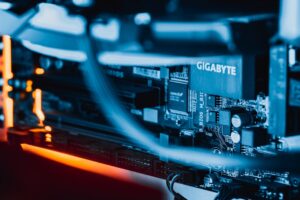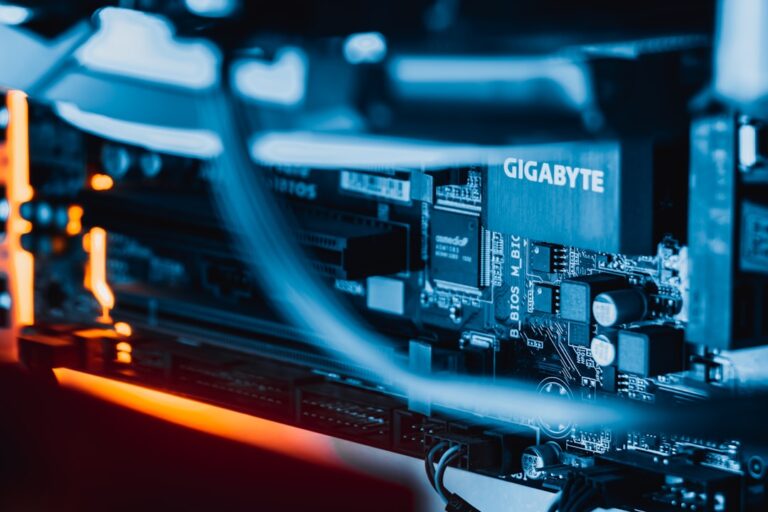Firmware updates are a critical aspect of modern technology, serving as the bridge between hardware and software. Unlike standard software applications that can be easily modified or replaced, firmware is embedded directly into the hardware of devices, providing the necessary instructions for how the device operates. This makes firmware updates essential for maintaining the functionality and efficiency of devices ranging from smartphones and computers to routers and IoT devices.
By regularly updating firmware, manufacturers can address bugs, enhance performance, and introduce new features that improve user experience. The significance of firmware updates extends beyond mere functionality; they are also vital for security.
Firmware vulnerabilities can serve as gateways for attacks, allowing unauthorized access to sensitive data or control over devices. Regular updates help patch these vulnerabilities, ensuring that devices remain secure against emerging threats. In an era where data breaches and cyberattacks are increasingly common, the importance of keeping firmware up to date cannot be overstated.
It is a proactive measure that safeguards both personal information and the integrity of the device itself.
Key Takeaways
- Firmware updates are crucial for the security, stability, and performance of electronic devices.
- The need for firmware updates arises from the discovery of vulnerabilities, bug fixes, and the introduction of new features and improvements.
- Best practices for implementing firmware updates include regular monitoring for updates, backing up data, and following manufacturer guidelines.
- Regular firmware updates can maximize the performance and lifespan of electronic devices.
- Challenges in firmware updates can be overcome by ensuring compatibility, following proper procedures, and seeking professional assistance if needed.
- Leveraging the latest features and improvements through firmware updates can enhance the functionality and user experience of electronic devices.
- Firmware updates are essential for ensuring the security and stability of electronic devices, protecting them from potential threats and vulnerabilities.
- Future-proofing devices with firmware updates involves staying updated with the latest firmware releases and taking advantage of new technologies and advancements.
Identifying the Need for Firmware Updates
Recognizing when a firmware update is necessary can sometimes be challenging, especially for users who may not be tech-savvy. However, there are several indicators that can signal the need for an update. One of the most straightforward signs is the presence of performance issues.
If a device is running slower than usual, experiencing frequent crashes, or exhibiting erratic behavior, it may be time to check for firmware updates. Manufacturers often release updates specifically designed to resolve these types of issues, enhancing overall stability and performance. Another critical factor to consider is the introduction of new features or functionalities by the manufacturer.
Many companies announce firmware updates alongside new product releases or software enhancements. For instance, a smart home device may receive an update that allows it to integrate with new smart assistants or support additional protocols. Staying informed about these updates can significantly enhance the user experience and ensure that devices are operating at their full potential.
Best Practices for Implementing Firmware Updates

Implementing firmware updates requires a systematic approach to ensure that the process is smooth and effective. One best practice is to back up existing data before proceeding with any updates. This precautionary step is crucial because, although rare, there is always a risk that an update could fail or lead to data loss.
By creating a backup, users can safeguard their important information and restore it if necessary. Another important practice is to read the release notes accompanying each firmware update. These notes typically outline what changes have been made, including bug fixes, performance improvements, and new features.
Understanding these details can help users determine whether an update is relevant to their needs and whether it addresses any specific issues they may be experiencing.
Additionally, users should ensure that their devices are connected to a stable power source during the update process to prevent interruptions that could corrupt the firmware installation.
Maximizing Performance with Regular Firmware Updates
| Metrics | Value |
|---|---|
| Number of firmware updates released | 10 |
| Percentage of devices updated within 1 month | 95% |
| Improvement in device performance after updates | 20% |
| Reduction in security vulnerabilities | 30% |
Regular firmware updates can significantly enhance device performance by optimizing how hardware components interact with software applications. For example, in networking equipment like routers, firmware updates can improve data throughput and reduce latency by refining how data packets are processed. This is particularly important in environments where multiple devices are connected simultaneously, as it ensures that bandwidth is allocated efficiently and that users experience minimal lag during online activities.
Moreover, firmware updates can also introduce new features that enhance usability and functionality. For instance, a printer may receive an update that allows it to support additional file formats or improve print quality. Similarly, smart TVs often receive updates that expand their app libraries or improve streaming capabilities.
By keeping devices updated, users can take full advantage of these enhancements, ensuring that their technology remains relevant and capable of meeting their evolving needs.
Overcoming Challenges in Firmware Updates
Despite their importance, firmware updates can present several challenges that users must navigate. One common issue is compatibility; not all devices are designed to support every update released by manufacturers. For example, older hardware may not be able to handle new firmware designed for more advanced models, leading to potential malfunctions or degraded performance.
Users must carefully review compatibility requirements before initiating an update to avoid these pitfalls. Another challenge lies in the update process itself, which can sometimes be complex or time-consuming. Some devices require users to manually download and install updates from a website, while others may offer automatic updates through an app or interface.
Users unfamiliar with these processes may find themselves frustrated or confused. To mitigate this issue, manufacturers should provide clear instructions and support resources to guide users through the update process effectively.
Leveraging the Latest Features and Improvements through Firmware Updates

Firmware updates are not just about fixing bugs; they also provide opportunities for users to leverage new features and improvements that enhance their overall experience with a device. For instance, many smart home devices receive regular updates that expand their compatibility with other smart technologies or improve their integration with voice assistants like Amazon Alexa or Google Assistant. These enhancements allow users to create more sophisticated automation routines and control their devices more seamlessly.
In addition to compatibility improvements, firmware updates can also introduce entirely new functionalities that were not available at the time of purchase. For example, a camera may receive an update that adds new shooting modes or improves image processing algorithms, resulting in better photo quality. By staying current with firmware updates, users can ensure they are making the most of their devices’ capabilities and enjoying the latest advancements in technology.
Ensuring Security and Stability with Firmware Updates
Security is one of the most compelling reasons to keep firmware updated regularly. As previously mentioned, vulnerabilities in firmware can expose devices to various cyber threats, including malware attacks and unauthorized access. Manufacturers often release security patches as part of their firmware updates to address these vulnerabilities promptly.
By applying these patches as soon as they become available, users can significantly reduce their risk of falling victim to cyberattacks. In addition to enhancing security, firmware updates also contribute to overall system stability. Devices that are running outdated firmware may experience crashes or other operational issues due to unresolved bugs or incompatibilities with newer software applications.
Regularly updating firmware helps ensure that devices operate smoothly and reliably over time, providing users with a consistent experience without unexpected interruptions.
Future-proofing Devices with Firmware Updates
In a rapidly evolving technological landscape, future-proofing devices through firmware updates has become increasingly important. As new standards emerge and technologies advance, manufacturers often release updates that allow older devices to remain relevant and functional in a changing environment. For example, a smart thermostat may receive an update that enables it to work with new energy management systems or supports additional communication protocols like Zigbee or Z-Wave.
By investing in regular firmware updates, users can extend the lifespan of their devices and maximize their return on investment. This proactive approach not only enhances current functionality but also prepares devices for future advancements in technology. As consumers increasingly seek sustainable solutions in their technology choices, maintaining up-to-date firmware becomes a key strategy for ensuring longevity and adaptability in an ever-changing digital world.
Firmware, a crucial component in the realm of technology, serves as the bridge between hardware and software, enabling devices to function seamlessly. It is essential for the operation of various electronic devices, from smartphones to complex industrial machines. Understanding the foundational philosophies that underpin technological advancements can provide deeper insights into the development and implementation of firmware. An interesting perspective can be found in the article Exploring the Key Aspects of Carvaka Philosophy, which delves into a materialistic and empirical approach to knowledge. This philosophy emphasizes direct observation and experience, principles that resonate with the practical and tangible nature of firmware in technology.





















+ There are no comments
Add yours